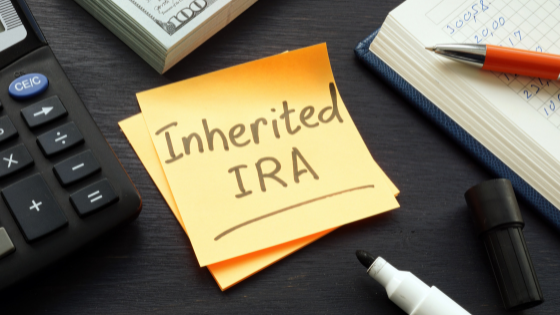 The rules and consequences of IRA beneficiary arrangements are complex
The rules and consequences of IRA beneficiary arrangements are complex
The rules pertaining to Individual Retirement Account (IRA) beneficiaries are complicated. Here is a quick look at the limitations the Internal Revenue Service (IRS) places on the beneficiaries of IRAs.
The biggest difference in the rules pertaining to IRA beneficiaries revolves around two separate issues: 1) when the IRA owner dies; and 2) who is the IRA beneficiary. If the IRA owner dies after required minimum distributions (RMDs) begin, the IRS rules are generally clear. Distributions must be made to the IRA beneficiary at least as rapidly as the distributions would have been made at the time of the IRA owner’s death unless a spouse is the designated beneficiary and chooses to treat the IRA as his or her own.
If the IRA owner dies before the RMDs begin, the rules are a bit more complex. If an IRA owner fails to designate a beneficiary, the IRA proceeds must be distributed to the IRA owner’s estate within five years. If the IRA owner designates his or her spouse as the beneficiary, the spousal beneficiary has several options. Directly from the IRS:
Inherited from spouse. If a traditional IRA is inherited from a spouse, the surviving spouse generally has the following three choices:
- Treat it as his or her own IRA by designating himself or herself as the account owner.
- Treat it as his or her own by rolling it over into a traditional IRA, or to the extent it is taxable, into a:
- Qualified employer plan
- Qualified employee annuity plan (section 403(a) plan)
- Tax-sheltered annuity plan (section 403(b) plan)
- Deferred compensation plan of a state or local government (section 457(b) plan), or
- Treat himself or herself as the beneficiary rather than treating the IRA as his or her own.
If a surviving spouse receives a distribution from his or her deceased spouse’s IRA, it can be rolled over into an IRA of the surviving spouse within the 60-day time limit, as long as the distribution is not a required distribution, even if the surviving spouse is not the sole beneficiary of his or her deceased spouse’s IRA.
Inherited from someone other than spouse. If the inherited traditional IRA is from anyone other than a deceased spouse, the beneficiary cannot treat it as his or her own. This means that the beneficiary cannot make any contributions to the IRA or roll over any amounts into or out of the inherited IRA. However, the beneficiary can make a trustee-to-trustee transfer as long as the IRA into which amounts are being moved is set up and maintained in the name of the deceased IRA owner for the benefit of the beneficiary.
Like the original owner, the beneficiary generally will not owe tax on the assets in the IRA until he or she receives distributions from it.
Inherited ROTH IRAs
Generally, the entire interest in a Roth IRA must be distributed by the end of the fifth calendar year after the year of the owner’s death unless the interest is payable to a designated beneficiary over the life or life expectancy of the designated beneficiary.
If paid as an annuity, the entire interest must be payable over a period not greater than the designated beneficiary’s life expectancy and distributions must begin before the end of the calendar year following the year of death. Distributions from another Roth IRA cannot be substituted for these distributions unless the other Roth IRA was inherited from the same decedent.
If the sole beneficiary is the spouse, he or she can either delay distributions until the decedent would have reached age 70½ or treat the Roth IRA as his or her own.
RMD Rules
When a traditional IRA is transferred into an inherited IRA, there are RMD rules to follow, set by the IRS. Your options for taking distributions from the IRA are based on when the original IRA owner died.
If the original IRA owner died before December 31, 2019, and…
- Died before reaching age 70½, you can start taking RMDs no later than December 31 of the year following death. You also have the option of distributing your inherited IRA under the 5-year rule. This allows you to take distributions however you like without penalty, so long as all assets are completely distributed from your inherited IRA by December 31 of the 5th year following the IRA owner’s death.
- Died after reaching age 70½, you may elect to calculate those RMDs by using your own age or by using the original IRA owner’s age in their year of death, whichever was longer. This option may be advantageous if the original IRA owner was younger than you. In the case of a non-spouse inheritor, RMDs are generally required to begin in the year after the year of death.
If the original IRA owner died on or after January 1, 2020…
- The SECURE Act requires beneficiaries to withdraw all assets from an inherited IRA or 401(k) plan by December 31 of the 10th year following the IRA owner’s death. Exceptions to the 10-year rule include payments made to an eligible designated beneficiary (a surviving spouse, a minor child of the account owner, a disabled or chronically ill beneficiary, and a beneficiary who is not more than 10 years younger than the original IRA owner or 401(k) participant). These beneficiaries can “stretch” payments over their life expectancy.
A Final Thought
The wide array of complexity can easily lead to confusion for an IRA beneficiary. Therefore, if you are an IRA owner or have been named an IRA beneficiary, it’s important that you become aware of the various rules and tax consequences of IRA beneficiary arrangements.
Don’t leave your loved ones in the dark. When you work with The Wealth Guardians and Ray Financial Group, you can be sure that your loved ones will get the most out of your retirement savings. We have a wide array of options and services to fit any need, and our team of experts are always here to help.
Our Custom Retirement Paycheck Plan shows how to protect your retirement from the risks of unexpected market swings, tax changes, and health care expenses using a mathematically tested strategy to create lifetime income allowing you to stop worrying about outliving your money and get on with enjoying the rest of your life.
Let us show you in black and white a custom retirement income plan that is comprehensive, individualized and based on strategies that balance growth with downside protection. Get your Custom Retirement Paycheck Plan now!
Give us a call at our Charlotte office at (704) 248-8549, or our Clemmons office at (336) 391-3409. Or, click here to request a no-cost, no-obligation meeting.
[SOURCES & ADDITIONAL DISCLOSURES]
Copyright © 2022 FMeX. All rights reserved. Distributed by Financial Media Exchange.







